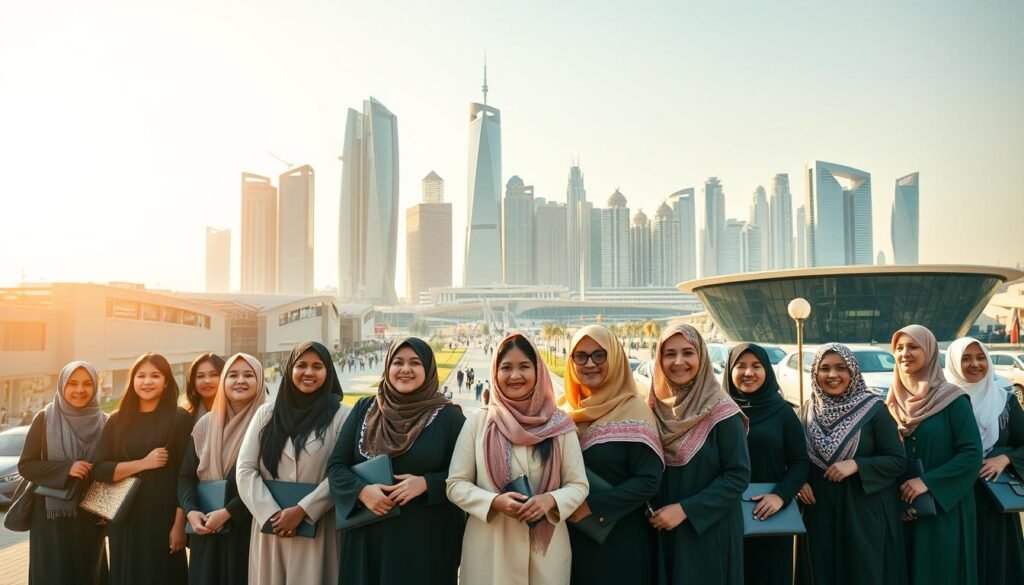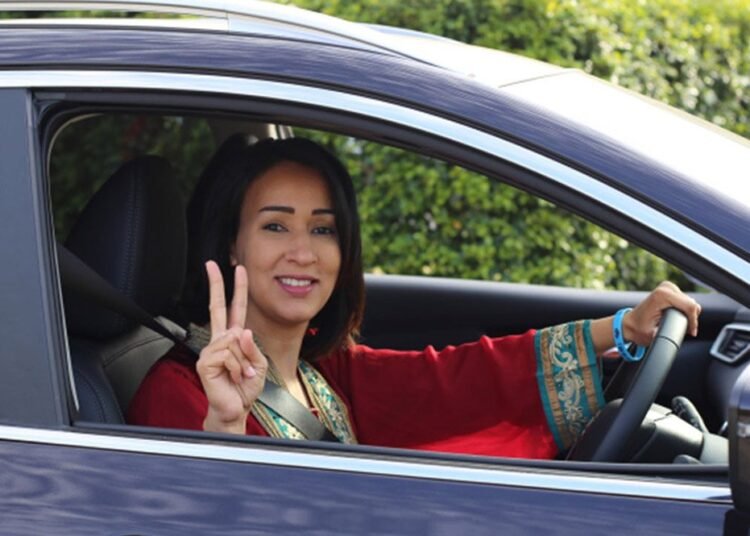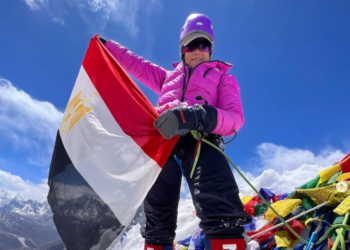In 2011, a simple act of defiance—filming herself driving a car—ignited a movement that would ripple across Saudi Arabia and beyond. The woman behind the wheel, a tech professional raised in Mecca, had grown weary of relying on male relatives for basic mobility. Her courage to challenge the driving ban transformed her into a global symbol of women’s rights.
Born in Mecca, she pursued computer science, a field dominated by men, and later worked at ARAMCO. This unique blend of technical expertise and firsthand experience with systemic barriers fueled her activism. When she shared her driving video online, it sparked international headlines and rallied support for Saudi women seeking autonomy.
Her campaign earned recognition from Time Magazine, which named her one of the 100 influential people in the world. Awards like the Václav Havel Prize for Creative Dissent further cemented her legacy. Today, her story reminds us how individual bravery can reshape societies.
Key Takeaways
- A 2011 driving protest challenged Saudi Arabia’s ban on women behind the wheel.
- Tech expertise and corporate experience shaped the activist’s strategic approach.
- Global media outlets like The New York Times amplified her message worldwide.
- Recognition from the Oslo Freedom Forum highlighted international support.
- Her journey demonstrates how personal acts can fuel systemic change.
Early Beginnings and the Road to Change
Long before steering wheels became symbols of resistance, a young Saudi woman navigated a different landscape. Growing up under strict guardianship laws, she witnessed how basic freedoms required male approval. This reality fueled her determination to challenge systemic barriers through education and strategic action.

Life in Saudi Arabia and Early Influences
Raised in a society where women’s rights were tightly controlled, she pursued computer science at King Abdulaziz University. Her analytical mindset thrived in tech courses dominated by male peers. This training later helped her dissect social issues with data-driven precision.
Evolving From Computer Science to a Voice for Change
Working at ARAMCO exposed her to global perspectives while highlighting local inequalities. She noticed how government policies limited women’s mobility and career growth. These observations sparked her shift from coding to activism.
In 2011, she co-founded the #Women2Drive campaign, blending tech savvy with grassroots organizing. The initiative addressed both practical needs and deeper human rights concerns. Her journey proves how education and lived experience can ignite movements that reshape nations.
Manal al-Sharif: Challenging Saudi Norms
The streets of Khobar witnessed a historic moment in May 2011. A tech professional filmed herself navigating traffic—an act criminalized for women at the time. Within hours, the video spread globally, turning a personal protest into a rallying cry against the driving ban.
Defying the Driving Ban and Igniting a Movement
Religious police arrested the activist within days. They demanded she sign a pledge never to drive again or speak to media. Instead, she used her release on bail to organize the #Women2Drive campaign, urging others to share their driving stories.
International outlets like The New York Times covered her stand, while Amnesty International called it a human rights breakthrough. Social media transformed local acts into global symbols—YouTube views soared, and Facebook groups united supporters worldwide.
The Harsh Realities and Personal Sacrifices
Backlash was swift. Employers terminated her contract, and threats flooded her inbox. Family members faced social pressure to silence her. “The price of defiance was steep,” she later told Oslo Freedom Forum attendees.
Despite risks, she continued speaking out. Her persistence inspired over 100 women to film their own driving journeys by 2013. Each video chipped away at the ban’s legitimacy, proving collective courage could dismantle decades-old restrictions.
Influential Campaigns and Their Impact
Digital activism became a catalyst for social transformation in Saudi Arabia. A wave of online movements redefined how women challenged systemic barriers, turning hashtags into tools of liberation.

The #Women2Drive Campaign and Its Ripple Effects
Launched in 2011, #Women2Drive gave Saudi women a platform to demand mobility rights. Campaign organizers encouraged participants to film their driving experiences and share them globally. The New York Times reported over 100 videos circulating within two years, each challenging the driving ban’s legitimacy.
This movement inspired parallel efforts worldwide. In 2013, activists launched #Faraj to aid domestic workers trapped in abusive contracts. Both campaigns exposed how government policies impacted vulnerable groups.
Initiatives like #Faraj and #IAmMyOwnGuardian
#IAmMyOwnGuardian emerged in 2016, directly confronting Saudi Arabia’s male guardianship system. Women posted photos without headscarves and shared stories of independence. The Václav Havel Prize for Creative Dissent recognized these efforts as groundbreaking.
Grassroots pressure led to tangible reforms. By 2018, Saudi authorities lifted the driving ban—a victory credited to years of persistent activism. Social media amplified voices that once faced isolation, proving digital spaces could reshape human rights debates.
These campaigns didn’t just change laws—they rewrote cultural narratives. As one participant stated: “We stopped asking permission to exist.”
Global Recognition and a Lasting Legacy
From Saudi roads to global stages, one activist’s defiance evolved into a blueprint for modern social change. Her journey sparked conversations in boardrooms, universities, and international forums, proving local actions could fuel worldwide movements.
Accolades from International Media and Prestigious Awards
TIME Magazine named her among the 100 most influential people in 2012, while Forbes listed her as a top global thinker. The Václav Havel Prize for Creative Dissent honored her innovative use of digital tools to challenge oppression. Even The New York Times featured her story multiple times, amplifying Saudi women’s struggles.
Her memoir, Daring to Drive: A Saudi Woman’s Awakening, became a bestseller in 15 languages. Readers from Tokyo to Berlin connected with its themes of courage and self-determination. The book remains required reading in human rights courses worldwide.
Speaking at Global Platforms and Inspiring Change Worldwide
TED Talks, United Nations panels, and the Oslo Freedom Forum hosted her speeches, blending personal narratives with calls for systemic reform. Audiences praised her ability to link Saudi women’s rights to broader issues like ethical technology and education access.
Universities now invite her to discuss digital activism’s role in modern advocacy. Her insights help activists strategize campaigns from Iran to Myanmar. As one Harvard attendee noted: “She turned driving a car into driving change.”
Legacy isn’t built in a day—it’s forged through relentless effort. Her story continues motivating new generations to challenge barriers, proving one person’s courage can rewrite history’s script.
Conclusion
Change often begins with a single act of courage—a truth embodied by Saudi Arabia’s groundbreaking movement for women’s autonomy. What started as a solitary drive evolved into a global symbol of resistance, proving that personal defiance can dismantle systemic barriers. The activist’s journey from tech professional to human rights icon reveals how education and lived experience fuel transformative action.
Key moments—filming that first drive, enduring arrests, and launching the #Women2Drive campaign—redefined possibilities for Saudi women. Reforms like lifting the driving ban in 2018 show progress, yet the fight for full equality continues. Recognition from TIME Magazine and the Oslo Freedom Forum underscores how local struggles resonate worldwide.
Every revolution needs sparks. Her story reminds us that rewriting social rules starts with ordinary people refusing silence. Whether sharing experiences online or supporting grassroots campaigns, collective action drives change.
As Saudi Arabia evolves, so does the global conversation about women’s rights. Let this journey inspire you to challenge outdated norms wherever they exist. Progress isn’t inevitable—it’s built daily by those brave enough to steer it forward.
FAQ
Why was Manal al-Sharif’s driving campaign significant?
Her bold defiance of Saudi Arabia’s ban on women driving sparked a global conversation about gender equality. The #Women2Drive movement became a symbol of resistance, inspiring countless women to challenge oppressive norms and demand autonomy.
What risks did she face for advocating women’s rights?
She endured arrest, public backlash, and threats to her safety. Her activism also led to surveillance, travel restrictions, and estrangement from parts of her community—a testament to her unwavering commitment to justice.
How did international platforms amplify her message?
Speaking at events like the Oslo Freedom Forum and earning accolades such as the Havel Prize for Creative Dissent brought global attention to Saudi women’s struggles. Her TED Talks and New York Times features further cemented her role as a human rights icon.
What lasting impact have her initiatives created?
Campaigns like #IAmMyOwnGuardian challenged the male guardianship system, paving the way for legal reforms. Her courage continues to empower activists worldwide to confront systemic inequality and fight for dignity.
How does her story inspire future generations?
By proving that one voice can ignite change, she redefined courage in repressive societies. Her journey from tech professional to global advocate shows how ordinary individuals can achieve extraordinary progress through persistence.






